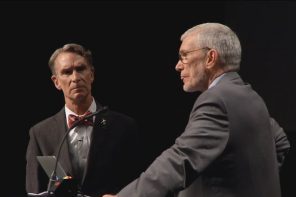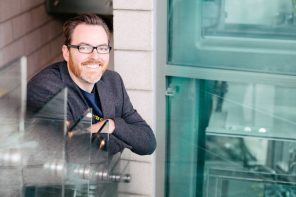Last week, The Cubit published an interview with Chade-Meng Tan, best known for his work as Google’s in-house mindfulness expert. He asked us for the opportunity to elaborate on some of the key questions raised in the interview, and we were glad to oblige.
Chade-Meng Tan writes:
I had a great time talking to Max Zahn. His questions were tough, but also thoughtful. More importantly, they came from a place of compassionate concern for the world. Talking to Max felt like having an engaging discussion with a friend, which is great, but when having such a discussion, it’s easy to become complacent about the precision and rigor in articulating one’s own thoughts, and that seems to have happened to me. I’d like to clarify three specific points that I made during the interview:
1. I don’t want to give the impression that I believe mindfulness practice has lost contact with the source teachings. In fact, I believe the exact opposite: that mindfulness practice, even in its modern form, is probably as close as we can get to the foundational meditation practices taught by the Buddha himself. In the ancient collection of his teachings called the Nikayas, the Buddha taught samatha (calm-abiding) and vipassana (insight) as the foundational mental qualities in meditation practice, and he often also reminds everyone to practice metta (loving-kindness).
Modern mindfulness, when taught by good teachers such as Jon Kabat-Zinn, contains a high dosage of all three ingredients. So, to me, mindfulness practice is definitely close to the source.
What I am concerned about is modern mindfulness as a movement. Specifically, I’m concerned about self-proclaimed mindfulness teachers who lack depth both in the practice and understanding of Dharma. If that continues over time, we run the risk of the mindfulness movement losing contact with the source teachings. In fact, I fear it has already happened in some instances. That is my main concern about American Buddhism.
2. I also don’t want to give the impression that I’m dissing Asian Buddhism. In my remarks to Max, I wanted to express my frustration that, when I was growing up in Singapore, people in my part of Asia had little access to Dharma and practice. The “Buddhism” most people knew back then was going to temples to ask statues for winning lottery numbers. There were (and still are) highly enlightened monks and nuns, no doubt, and they hold the purest Dharma of all, but most civilians had little access to or understanding of the practice. I know that things have been rapidly improving in Asia. In my carelessness, I expressed my frustration with the past in a way that sounded like a sweeping statement about Asian Buddhism today. I apologize for that.
One way I could have expressed it: in my part of Asia, when I was growing up, Dharma could often be found in high concentrations, but only in small areas. Perhaps the opposite is true in America today.
3. I think the most important point in this discussion is that we have to hold teachers to a different bar than normal practitioners. For normal practitioners, if they do as little as one breath per day, and if they just benefit in some small way, I’m happy for them. But teachers need to have deep practices and deep understanding of Dharma. That’s the only way to preserve the purity of Dharma in the long term.
I’m thankful to the editors at Religion Dispatches for allowing me to send in this clarification.




